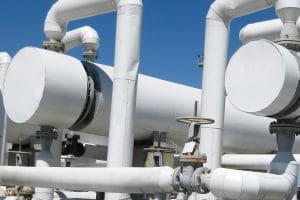 When it comes to electrical thermal management, there are many different factors that contribute to any given solution’s effectiveness. Every application that requires electrical cooling comes with its own set of operating parameters, and any cooling solution must meet those parameters with optimal efficiency. Of the many different factors that impact that efficiency, the need for maintenance and unscheduled repairs is a significant one. As more companies implement more advanced technologies to help streamline their productivity, lower-maintenance thermal management solutions have becoming increasingly more essential.
When it comes to electrical thermal management, there are many different factors that contribute to any given solution’s effectiveness. Every application that requires electrical cooling comes with its own set of operating parameters, and any cooling solution must meet those parameters with optimal efficiency. Of the many different factors that impact that efficiency, the need for maintenance and unscheduled repairs is a significant one. As more companies implement more advanced technologies to help streamline their productivity, lower-maintenance thermal management solutions have becoming increasingly more essential.
The impacts of electrical cooling maintenance
The impacts that a thermal management system’s need for maintenance can have is felt most in the use of older, more cumbersome solutions. For example, air conditioning units were once the more common cooling solution, though their many external moving parts and complicated HVAC processes often require invasive maintenance or repairs for one or more damaged parts. Every round of maintenance costs time and money, and every unscheduled repair may cause significant amounts of downtime during operating hours. Eliminating these constraints has been one of the most important benefits that streamlined thermal management has had on companies’ overall productivity.
Streamlined thermal management with heat exchangers
When heat exchangers first became a popular electrical thermal management solution, many of their most notable advantages centered around the reduced costs and improved efficiency of their electrical cooling methods. Compared to air conditioners, which use large amounts of energy to create chilled air and circulate it through an electrical enclosure, heat exchangers simply transfer waste heat using an eco-friendly cooling fluid. This requires minimal energy, and therefore, costs exponentially less than more traditional cooling methods. In addition, transferring heat doesn’t require complicated machinery or HVAC-like equipment, so heat exchangers don’t require as much maintenance (or any) to continue running efficiently.
The benefits of low-maintenance thermal management
When a company can effectively cool its technologies without having to constantly maintain or repair its cooling systems, the savings go far beyond cutting down on energy usage. Using high-performance heat transfer methods means companies experience less downtime and don’t have to invest as much in routine maintenance. Employees can focus on their tasks without being interrupted by thermal management concerns, which further boosts the company’s overall productivity. To learn about how heat exchangers provide optimal thermal management with minimal maintenance, call Noren Thermal Solutions in Taylor, TX, at 866-936-6736.







